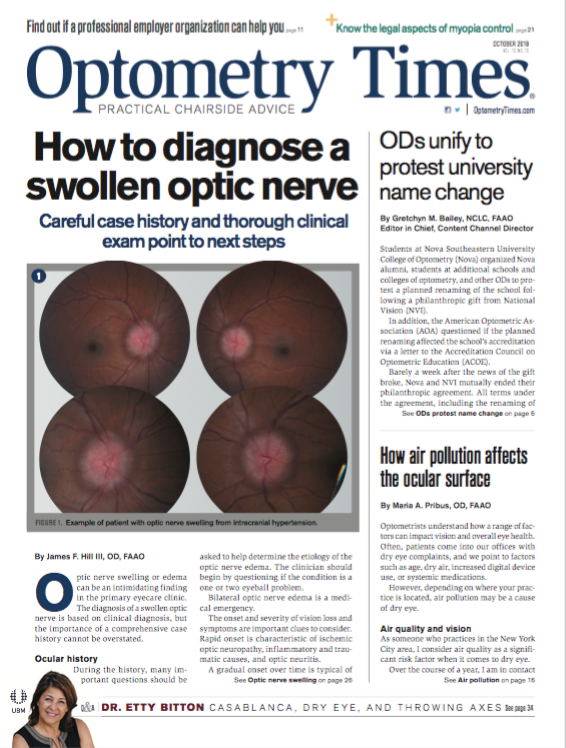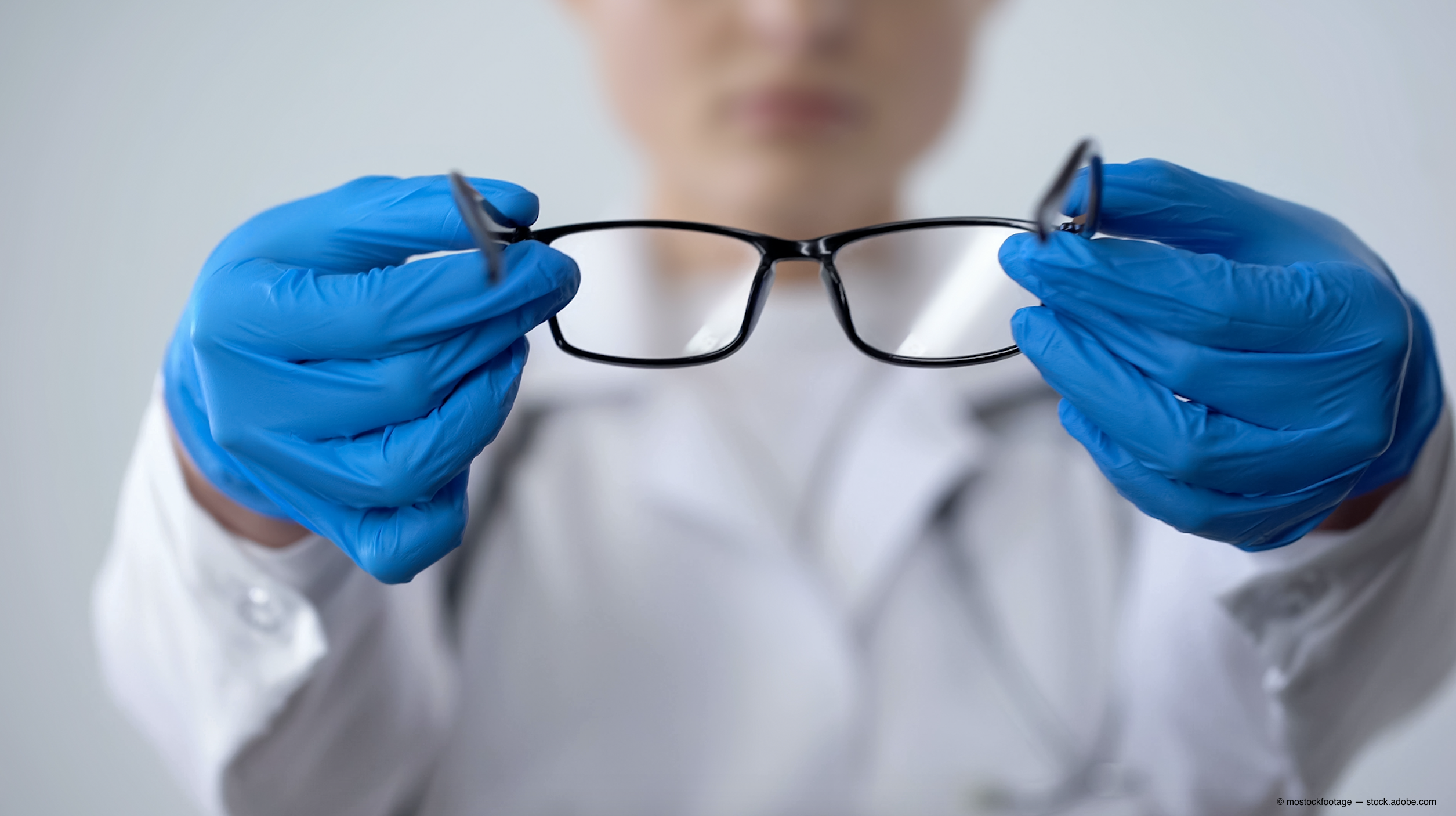Know the legal aspects of myopia control

The incidence of progressive myopia and degenerative myopia is increasing by epidemic proportions and has been increasing over the past several decades.1
Estimates show myopia has increased 40 to 50 percent over the past 30 years in the U.S., and 75 to 90 percent in East Asia.2
The level of myopia >5.00 D is increasing dramatically as well,3 with resulting sight-threatening risks including retinal detachment, tears, and holes; cataracts; glaucoma; myopic macular degeneration (maculopathy); and posterior vitreous detachment (PVD).2
Related: Considering myopia control
More frightening is the prediction that by 2050, myopia in North America could affect 50 percent of the population3-with its progression unchecked. Optometrists in Asia, Australia, and Europe are reported to be more active in intervention, according to the Journal of British Contact Lens Association 2016 study.3
Myopia risk factors
A number of factors enter into the evaluation of the development and progression of myopia, including the patient’s age at onset, ethnicity, the amount of time spent on close work as well as outdoors, binocular status, and family history. These factors should be documented as part of the myopia work-up and baseline in addition to documentation of historical vision changes.
Choosing one’s parents and family would be ideal; however, having both parents who are myopic appears to increase the risk of having myopic offspring as well as a higher incidence of high myopia and progressive myopia.4 Of course, parentage is not a factor that can be modified or eliminated.
There appears to be correlation among those individuals born during the summer months, females, diet, close work, higher IQ, and level of educational attainment.5 These may be risk factors only and are not easily modified.
Related: Implementing myopia prevention and control
Further study is required to determine concrete relationships as well as how to best modify the risks.
Patients who are categorized as progressive myopes should be closely monitored for other complications, including glaucoma, detached retinas (or retinal holes) and earlier incidence of cataracts. As such, patients should be told of these potential problems and warned of what to expect and available treatment options.
Discretion should be used when educating patients so that they are not overwhelmed with information or feelings of impending doom and conclusions of ultimate blindness. Most high and progressive myopes are deeply concerned about the likelihood of blindness.
It is optometrists’ responsibility to make certain that they monitor patients, offer the best options for control, and work to assure them that blindness is an unlikely result. It is also important to let inform them of ongoing research and potential advances that may work well for them.
Current options
A number of available options may benefit our patients. All come with risks; none come with guarantees-and some are more easily implemented than others. Costs always play into the patient’s decision of what path to follow. For some patients, the choices may simply be out of reach financially. Nonetheless, ODs must ensure that patients are aware of their viable options.
Options include:
• RGP lenses
• Bifocal (or progressive) spectacle lenses
• Spectacle under correction
• 0.01% atropine therapy
• Dual focus or multifocal soft contact lenses
• Dual focus or multifocal RGP contact lenses
• Orthokeratology or corneal reshaping contact lenses
Behavior modification options include:
• Reducing near work, including vision breaks
• Increased distance from monitors and screens
• Increasing time spent outdoors
When advising patients about behavioral modifications, an easy method that can be implemented without cost or side effects is to ensure adequate time outdoors. This can assist in reducing eyestrain imposed by increased use of digital devices.4
Forty minutes outdoors, which can be broken into 20-minute increments, while working or playing at a distance of 20 feet or more works well.5
Another option for patients includes phakic interocular lenses (IOL), although no studies document this alternative for the progressive myope. All prescriptions should include high index lenses with an anti-reflective coating, as well as utilization of photochromatic lenses.
These options may not be covered for patients with insurance limitations and may not even be available as an upgrade, but sthey hould be discussed and/or recommended when appropriate.
Currently, refractive surgery is not considered a solution for myopia control, despite its widespread use for myopia correction when the vision is stable.
Looking ahead
Thus far research is unable to validate any control or cure of myopia, although the body of evidence is growing.2 Of these options, several stand out as being more effective in slowing myopic progression, including atropine, ortho-K and soft bifocal contact lenses.3
Several contact lens companies are conducting investigations with soft lenses and myopia control. Currently, the FDA, in cooperation with the American Optometric Association, is moving forward with guidelines for myopia control devices.6
Today, ortho-k is the only approved contact lens for myopia control up to -6.00 D. All other techniques or methods fall under the ”off-label” uses.3
As always, it is appropriate to obtain informed consent from the patient as well as parent or guardian if the patient is a minor. Sarah Kochik, OD, FAAO, and Yue (Maria) Liu, OD, PhD, at UC Berkeley College of Optometry have made available an informed consent form.7
Remember that with all off-label therapies, it is appropriate to obtain informed consent from the parent or guardian, as well as the patient.
Let’s approach myopia control and possible legal aspects or repercussions by using the reporter’s guideline to explore the topic: who, what, when, where, and why.
Who
The first question is who are we talking about-a school-aged child or an adult? How fast is the patient’s myopia progressing?
If the patient progresses <1.00 D per year over a short time span, that not the same as a patient who has a change of 1.00 D every three to six months or several diopters from one annual visit to another.
What are the corneal topographies, keratometry readings and spectacle corrections with best corrected acuities?
Is there a family history of high myopia?
Are other risk factors present?
What
What is the environment in which the patient lives and works, and what are the patient’s visual needs? What is the patient’s end goal and is it realistic?
Patient expectations are an essential element of the legal aspects with which you will be faced. Is the patient accepting of a minimal annual change or will he feel betrayed when the changes are more than he expects?
When
How often will you follow the patient and her increasing myopia?
For the patient with a lower level of myopia, an annual visit may be appropriate. For the patient who is experiencing a rapid progression, every three to four months may be more in line.
If the patient hasn’t been seen for the past two years and the correction has tripled or quadrupled, that could be a potential concern.
Where
Do you have access to the patient’s history, including family history, past prescriptions, and frequency of change? Have you documented corneal readings or changes?
Are there underlying medical or environmental concerns?
What is the patient’s financial situation? Is she covered by insurance, are there insurance restrictions, or is she financially unable to cover treatments?
Why
Why should ODs attempt to control myopia, and what are the legal repercussions for not controlling, attempting to control, or even discussing possible options with the patient and/or parents?
Are there legal requirement to discuss with the patient myopia control options, costs, or insurance coverage?
The bottom line
ODs know that myopia progression is a looming problem for patients with very serious consequences affecting their vision as well as their quality of life.
At the very least, ODs have a basic duty to investigate and advise patients of their viable options. Legally, patients have a right (and doctors have an obligation to disclose) all viable options so patients can make an informed decision. If they elect to ignore advice or wait and see, that is their legal right.
ODs cannot offer a guarantee of success, but we are able to look at the statistics and probability of progression.
Professional judgment is a critical player in myopia control, along with the confines of practitioner comfort level. The U.S. is lagging behind other countries in recognition of the criticality of progressive myopia, studies affecting possible actions for control or containment, and the implementation of more aggressive means to meet our patients’ needs and concerns.8
ODs have a legal obligation to monitor their patients, diagnose progressive change, and offer patients viable options for treatment. Of course, it is appropriate to document advice given and the plan or assessment for each patient.
It is never too early to start the discussion when ODs see myopia is progressing, and the discussion should be conducted by the doctor, not a staff member. Not only does the doctor discussion carry greater weight, but it signals the importance of ongoing care and management within the doctor-patient relationship.
Even if a patient is financially indisposed, ODs are able to recommend high-index photochromatic lenses; decreased time with handheld devices, computers, and TV; a minimum of 45 minutes of outdoor activity; and return office visits as the doctor deems appropriate.
It is critical that the doctor explain the importance of these recommendations, including scheduling follow-up visits. Patient counseling may even cover how to handle bullying at school, if appropriate. Children who wear spectacles are more likely to be bullied at a time when compliance is most crucial. Consider closer follow-up of female patients because myopia appears earlier and evolves more quickly for these patients.4,5,9
When possible, a baseline evaluation should be part of the patient’s record, covering the risk factors, binocularity, topography, axial measurement, ocular health examination, uncorrected and best corrected acuity at distance and near under high and low contrast at distance and near, pupil diameter, cycloplegic examination, and a detailed case history.
ODs are not under a legal duty to prevent myopia or even to control it. We are, however, responsible for educating patients, offering them viable options, and monitoring them whenever possible.
Even under the best of conditions, ODs may not be able to slow down or stop progressive myopia, and ODs are not expected to offer their services and care at no charge. Recognize that myopia is a major worldwide epidemic, and ODs have a critical role to play in educating patients and caring for their visual needs. To do otherwise may result in severe patient harm that can extend years into the future, seriously affecting patient needs as well as healthcare system.
References:
1. Morgan IG, He M. An important step forward in myopia prevention: low-dose atropine. Ophthalmology. 2016 Feb;123(2):232-3.
2. Lipson J. Considering myopia control. Optometry Times. 2007 Oct;8(10):24-28. Available at: http://www.optometrytimes.com/modern-medicine-cases/considering-myopia-control. Accessed 10/15/18.
3. Pinkston W. Myopia in Check. AOA Focus. 2017;4(8):Oct;25-28.
4. Primary Care Optometry News. Outdoor activities associated with less myopia. Available at: https://www.healio.com/optometry/optics/news/print/primary-care-optometry-news/%7Bac76e252-0c42-491e-8645-9116cc7ff1d6%7D/outdoor-activities-associated-with-less-myopia. Accessed 10/15/18.
5. Varu DM. The looming myopia epidemic. Cat Ref Surg Today. Available at: https://crstoday.com/articles/2017-jul/the-looming-myopia-epidemic/. Accessed 10/15/18.
6. CooperVision MiSight. Available at: https://coopervision.com.my/contact-lenses/misight. Accessed 10/15/18.
7. Kochik S, Liu Y. Myopia control beyond orthokeratology. Advanced Ocular Care. 2017 Sept;16-18.
8. Wolffsohn JS, Calossi A, Cho P, Gifford K, Jones L, Li M, Lipener C, Logan NS, Malet F, Matos S, Meijome JM, Nichols JJ, Orr JB, Santodomingo-Rubido J, Schaefer T, Thite N14, van der Worp E, Zvirgzdina M. Global trends in myopia management attitudes and strategies in clinical practice. Cont Lens Anterior Eye. 2016 Apr;39(2):106-16.
9. Gong J, Xie H, Mao X, Zhu X, Xie Z, Yang H, Gao Y, Jin X, Pan Y, Zhou F. Relevant Factors of Estrogen Changes of Myopia in Adolescent Females. Chin Med J (Engl). 2015 Mar 5;128(5):659-663.

Newsletter
Want more insights like this? Subscribe to Optometry Times and get clinical pearls and practice tips delivered straight to your inbox.





.png&w=3840&q=75)





















